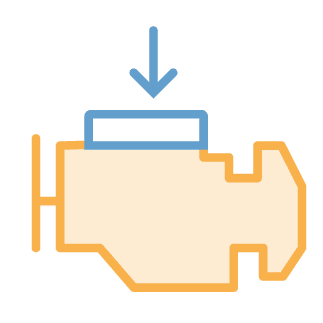
Our work with Qoros on their 1.6 litre turbocharged engine resulted in a reduction of 50mm in height and 70mm in depth and a reduced weight of 20 kg.
sq mm smaller
lighter engine
Implementation of the Freevalve system leads to a more compact total engine package because many of the parts used in a traditional camshaft-based engine are no longer necessary. With Freevalve, manufacturers are able to do away with expensive parts such as the throttle body, camshaft, cam drive, timing gear and cover, wastegate, pre-catalytic converter systems and direct injection systems. The functionality that these physical components use to enable will now be handled by the intelligent engine controls.
On a typical vertically positioned engine, Freevalve will reduce build height and improve pedestrian impact safety. On boxer engines, the width of the engine will be reduced dramatically.
Our work with Qoros on their 1.6 litre turbocharged engine resulted in a reduction of 50 mm in height and 70 mm in depth.
Reduced weight is also an important benefit of the Freevalve system. Our Qoros engine became 20 kg lighter after the change to Freevalve technology.
The figure below illustrates the difference in package size between a typical DOHC head, and a head utilizing the Freevalve System.
Blue line: Original Qoros Engine Yellow line: Freevalve Cam-Free Engine
Copyright © 2022 Freevalve
Freevalve AB | Kelliehousevägen 73 | Ängelholm S-262 74 | Sweden | Registration # 556436-7141


Freevalve do not sell any products off the shelf, but we love to do development projects with customers and we constantly seek the best people in the industry to join our team.
Please contact us on the following addresses:
If you want to get in touch with the management team, click here >